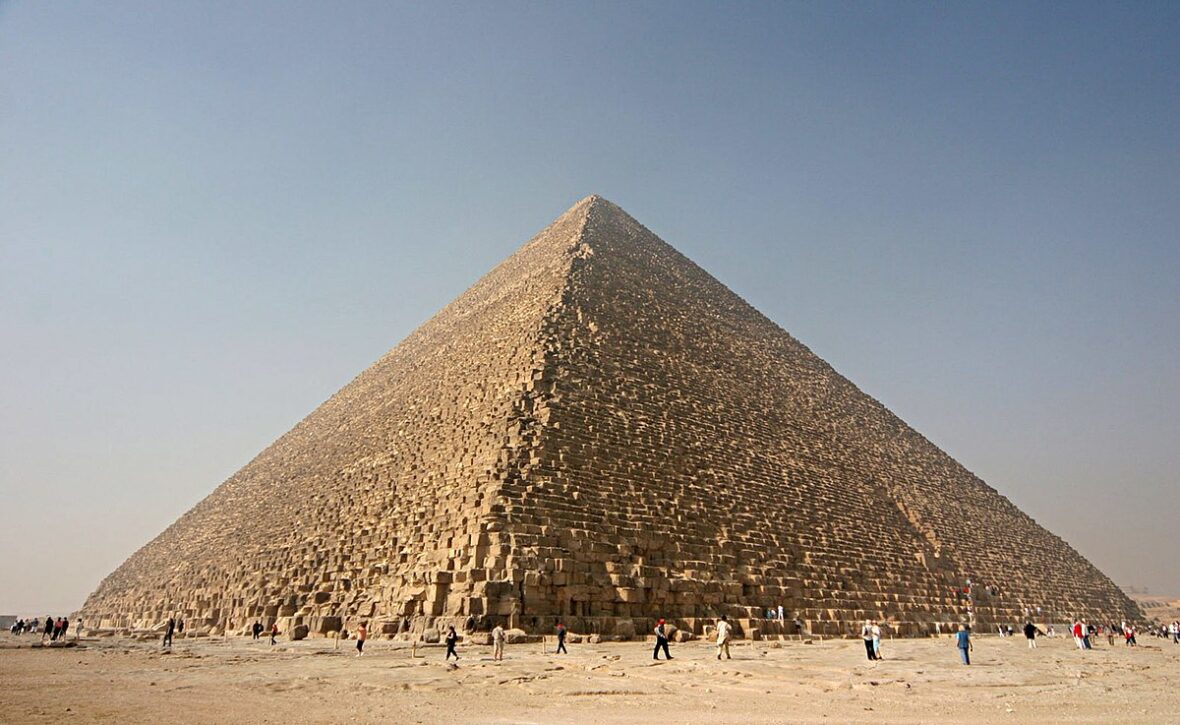Just like the Seven Wonders of our modern-age world, there were Seven Wonders of the ancient world. The only one out of those 7 ancient wonders to be standing largely intact today is the Great Pyramid of Giza that screams technological and architectural finesse of the ancient Egyptians that remained unrivaled for millennia.
In fact only modern man with all his fancy tools and technology is capable of replicating the Giza pyramid. The extreme scientific accuracy of the pyramid often gave birth to a question – “Was the Great Pyramid of Giza built by Egyptians or was it the work of some extraterrestrial life form, far more intelligent that the ancient people?” Well, since we don’t have any evidence of aliens at work, we are pretty much happy to accept that the ancient Egyptians made it. Take a look below for 30 amazing and interesting facts about the Giza Pyramids of Giza.
1. According to Egyptologists, the Great Pyramid of Giza was a tomb, designed and built for Pharaoh Khufu of 4th Dynasty Egypt.
2. Since it was built for Khufu, the pyramid is also known as the Pyramid of Khufu.
3. This Great Pyramid is one of 3 pyramids that were built in Giza and was the largest of all. For 3,800 years straight, this pyramid remained world’s tallest structure that was made by man.
4. The two other large pyramids (not as large as this one) were built for Pharaoh Menkaure and Pharaoh Khafre.
5. As far as the size of the Great Pyramid of Giza is concerned, its original height was 481 feet or 146.5 meters. However, because of 3,800 years of erosion caused by natural elements like rain and wind, the pyramid lost some of its height from the very top and today it stands 455 feet tall, which is 138.8 meters.
6. Experts say that it took about 23 years to complete this massive structure and the overall weight of the structure is estimated to be around 5.9 million tonnes.
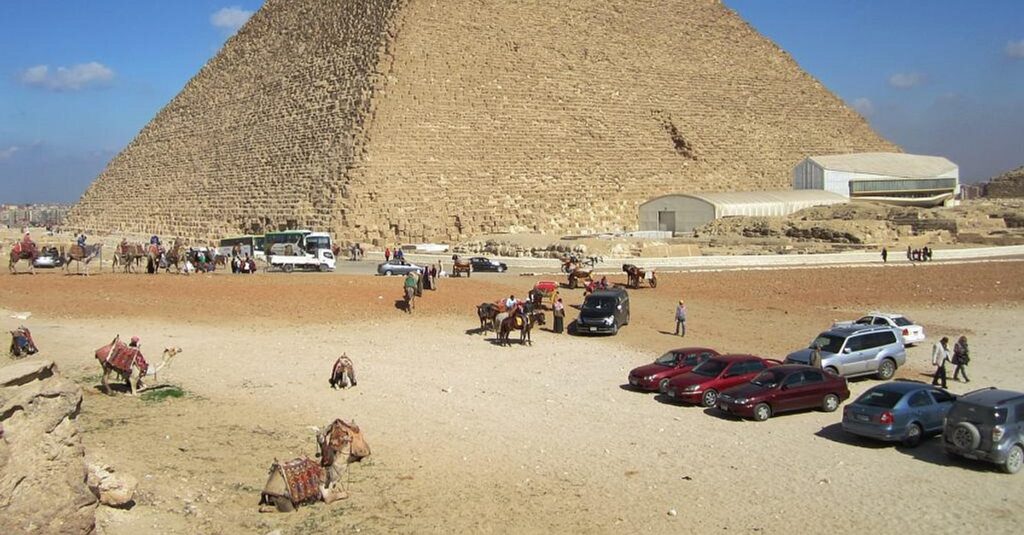
7. The Great Pyramid’s base is a perfect square and each side of the square measuring 756 feet. The base spans over 13 acres of land and is big enough to accommodate nearly 10 football fields.
8. Each side of the pyramid covers an area of 5.5 acres. So for four sides, the total surface area is 22 acres.
9. As of today, in order to reach the very top or summit of the pyramid, you need to climb 203 steps.
10. The construction work for this pyramid started in c. 2580 BCE and was finished in c. 2557 BCE.
11. Experts estimate that nearly 2.3 million stone blocks had been used to build this massive structure with the average weight of each stone block being 7 tons. Some of the stone blocks were as heavy as 30 tons and some weighed well over 50 tons.
12. The total area covered by the pyramid’s base is 592,000 ft2 or 55,000 m2.
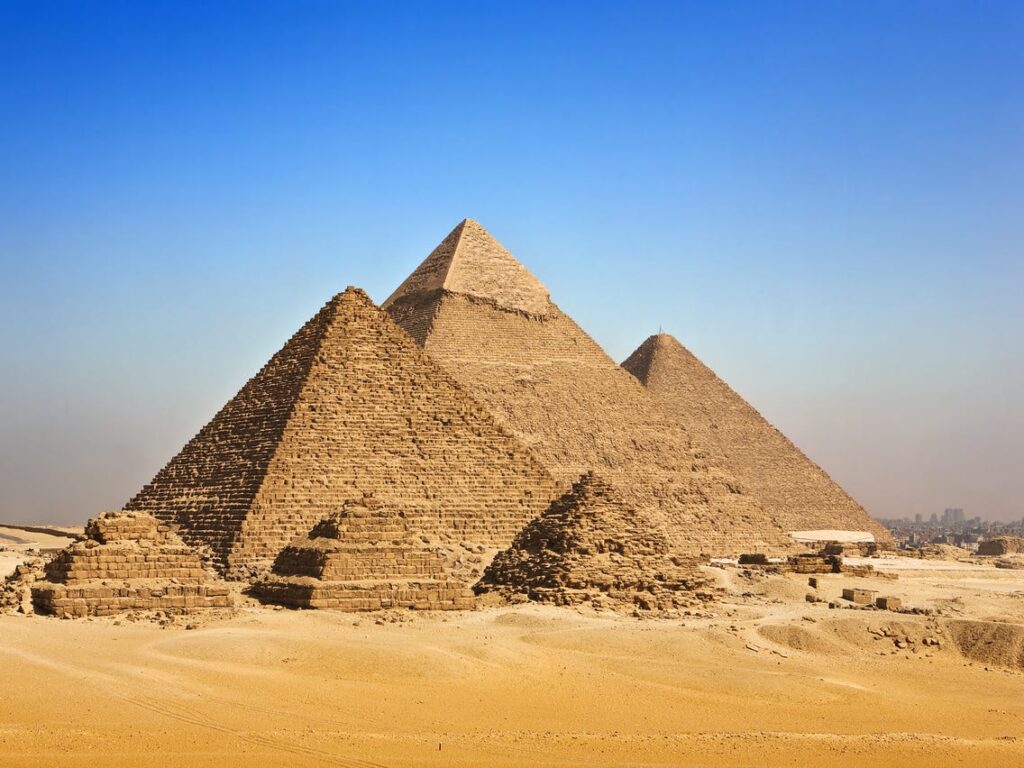
13. When the pyramid was built, the entire structure was covered with what is known as casing stones. Casing stones were actually limestones that were extremely well polished.
14. According to experts, some 144,000 casing stones were used. Each of these casing stones had a thickness of nearly 100 inches.
15. These casing stones were also extremely flat. So flat that in mathematical terms, the accuracy of the stones’ flatness stood at 1/100th or 0.01 inch of perfect straight. The average weight of each casing stone stood at 20 tons.
16. The casing stones were so shiny that they reflected sunlight in such a way that the whole structure looked like a massive white jewel sparkling in daylight.
17. Only a few of these casing stones remain today near the base of the pyramid. The remaining were removed after a massive earthquake that took place in 14th century shook the pyramid and loosened the casing stones.
18. The Arabs then ripped off the casing stones and used them for building mosques.
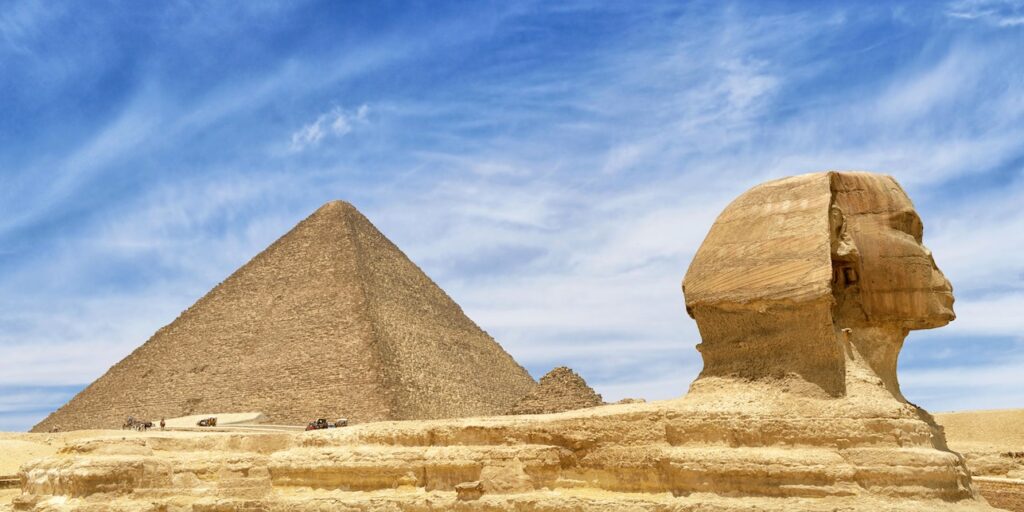
19. As far as the beauty of the Great Pyramid was concerned in its full glory, it is being said that the highly polished casing stones served the purpose of gigantic mirrors, which led to so powerful and brilliant light reflections that those reflections could easily be seen from moon. Well, there is absolutely no way of verifying this.
20. It is because of the brilliant reflections of the casing stones that the Great Pyramid was named by the Egyptians as ‘Ikhet‘ which in English means ‘Glorious Light‘.
21. It is said that ball and socket design of construction was used for the cornerstone foundations of the pyramid to help it deal with earthquakes and earth’s heat expansion.
22. Scientists have been baffled by the mortar that was used for the construction of the pyramid. The mortar is way stronger than the rocks that were used and though scientists have actually analyzed the chemical composition of the mortar, they have not been able to reproduce it.
23. The Great Pyramid is the only pyramid in world to have slight concave faces on all four sides.
24. Yet another baffling fact is that though we say that the Great Pyramid has four sides, it actually has eight sides. One each of the four sides, there is an indentation of laser precision that that divides each face into two pieces.
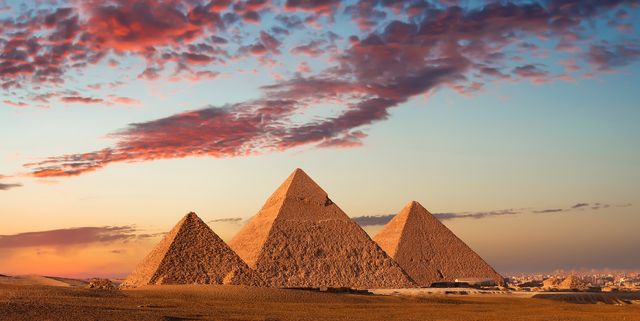
25. From ground, viewers will not see the indentations and hence, they can only see four faces. In order to see the indentations and all 8 faces of the pyramid, one needs to go aerial and that too when the lighting conditions are perfect to make the 8 faces visible.
26. The 8 faces of the Great Pyramid are visible only during autumn equinox and spring equinox during dawn as well as during sunset. Those are the times with the sun casts a shadow on the pyramid, making the indentations properly visible from air.
27. Inside the pyramid, the temperature is maintained at 20 degrees Celsius or 68 degrees Fahrenheit. This temperature never changes and is actually equal to earth’s average temperature.
28. The Great Pyramid is the last of the three pyramids that were built by Egyptians with a swivel door. However, that swivel door no longer exists in the pyramid. The other two pyramids with swivel door were of Sneferu – Khufu’s father and Huni – Khufu’s grandfather.
29. According to several reports, the Great Pyramid’s swivel door once weighed 20 tons before the pyramid was broken into for the first time. According to those reports, the door was not just a massive swiveling door but was incredibly well-balanced with a so perfect a fit that once it was closed, there was extremely difficult to know that there was a door in place by looking at it from the outside. This happened because there weren’t any significant crevices or cracks that would easily give about that 20-ton rock slab as a door.
30. Though the door was incredibly heavy and extremely difficult to detect from out, it was incredibly easy to open from the inside with very little force. It could be easily opened simply by pushing the door from inside using bare hands.

